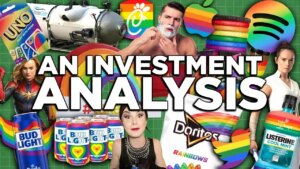Read This Before July 9th: Liberation Day 2.0

As July 9 nears, U.S. trade policy is again in the spotlight—and markets are bracing for another wave of uncertainty. Here’s what you need to know and how to respond:
1. Tariffs Triggered Early‑Year Market Turmoil
New tariffs announced in February, March, and April sparked sharp sell-offs—global markets fell rapidly after each announcement businessinsider.com+5finance.yahoo.com+5ainvest.com+5marketwatch.com. April’s “Liberation Day” tariffs triggered the steepest drop since early 2020 moneyweek.com+5en.wikipedia.org+5en.wikipedia.org+5.
2. How High Are Tariffs Now?
Average U.S. tariffs jumped by 12–13 percentage points in 2025, reaching the highest level since the 1930s budgetlab.yale.edu. Higher import duties add roughly 1.3–1.5% to consumer prices, harming household pocketbooks .
3. Tariffs as Revenue Boost
Tariffs generated over $100 billion in customs revenue recently reuters.com+15axios.com+15ubs.com+15. Treasury Secretary Bessent projects that annual tariff revenue could reach $300–$600 billion apnews.com+8wsj.com+8theaustralian.com.au+8.
4. Impacts on Jobs and Growth
Elevated tariffs could shave around 0.6 percentage points off 2025 GDP growth and increase unemployment by 0.3 pp , while disrupting imports and exports.
5. Market & Dollar Volatility
July 9 outcomes could destabilize currencies, equities, and bonds marketwatch.com+9reuters.com+9finance.yahoo.com+9. Investors are already positioning defensively: stock index volatility has spiked, especially in one-month VIX futures reuters.com.
6. Investor Strategies Amid Uncertainty
• Go long-term. Buying into sell-offs has historically rewarded patient investors—volatility gave way to rebounds .
• Watch sector rotation. Tariff-sensitive stocks—like autos and materials—may see cost stress, while domestic-focused sectors could benefit .
• Use hedging tools. Major firms recommend put options and volatility trades to prepare for sudden drops reuters.com.
7. Federal Reserve Reaction
Persistent tariffs and trade uncertainty complicate the Fed’s inflation outlook. According to Morgan Stanley, a July rate cut may be put off if tariffs remain elevated nypost.com+6reuters.com+6businessinsider.com+6.
Bottom line: The July 9 tariff deadline is a clear catalyst for market turbulence. However, volatility brings opportunities for long-term investors prepared with strategic planning, sector insights, and risk management tools.
Jaspreet Singh is not a licensed financial advisor. He is a licensed attorney, but he is not providing you with legal advice in this article. This article, the topics discussed, and ideas presented are Jaspreet’s opinions and presented for entertainment purposes only. The information presented should not be construed as financial or legal advice. Always do your own due diligence.






